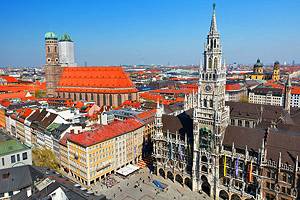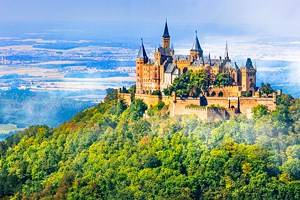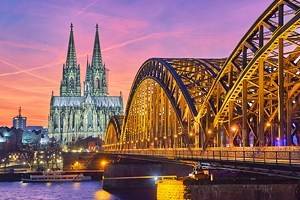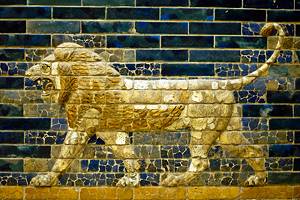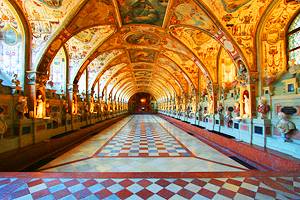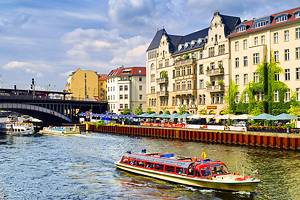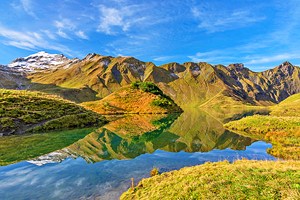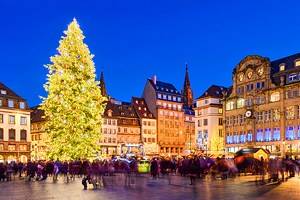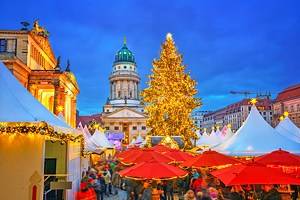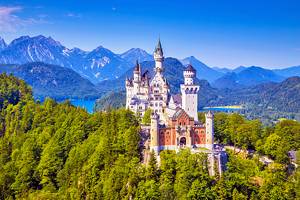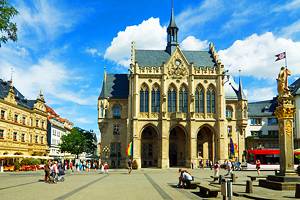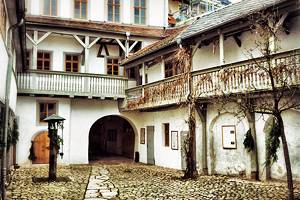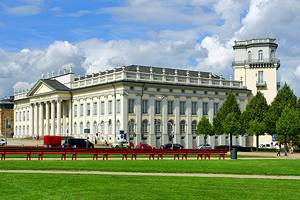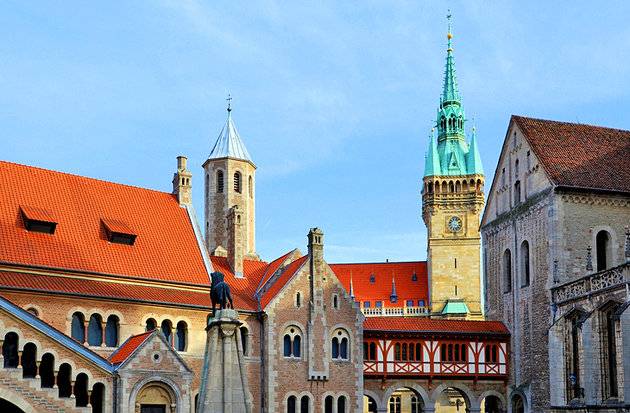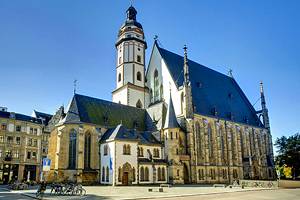Small Towns in Germany
A dozen people could travel throughout Germany in search of its best towns to visit, and the result would be 12 entirely different lists. Some towns might appear on only one or two, others would appear in several lists but in different order. And each traveler would have had trouble narrowing the selections down to a few. This is because Germany has such a bounty of beautiful, historic, and interesting small towns.
Despite wars and the zeal for modernization, thousands of houses dating from the Middle Ages still survive, as do Gothic and Baroque churches. Renaissance and older castles overlook the towns; these and watch towers often hold museums today.
Especially in areas such as the Black Forest that largely escaped World War II bombing, entire streets of half-timbered homes and public buildings are a common sight. Choosing a place to visit among them is nearly impossible, so any list will be more subjective than definitive.
All these towns have historic sites, museums, or other tourist attractions to visit, but some make this list more for the pleasures of wandering through visually enchanting lanes and sipping coffee in a café overlooking a postcard-perfect square. However lovely, each of these is more than just a pretty face, and we can promise that you won't be disappointed by planning your vacation with the help of this list of the best towns in Germany.
Bad Wimpfen, Baden-Württemberg
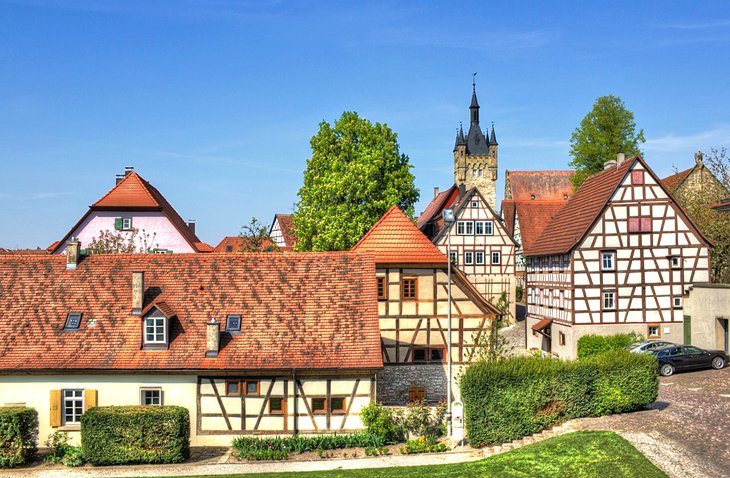
With its streets of half-timbered houses, steeply pitched red roofs, and pointed spires, Bad Wimpfen could be the poster child for a Black Forest towns (as it indeed is–you may recognize it from tourist brochures). Remnants of the town walls still seem to hold one side in its place on its hilltop beside the Neckar River.
Bad Wimpfen earns its place as a highlight of the Burgenstraße, Germany's Castle Road, as the site of the largest imperial palace north of the Alps. Built in the 12th century by the Staufer dynasty of Friedrich Barbarossa, the castle still retains two of its towers, the arcades, the Palace Chapel, and the Stone House.
For the best view of Bad Wimpfen's steep-pitched rooftops, climb to the top of the Blue Tower. The second, known as the Red Tower, contains a museum of medieval armor and weapons.
In the Gothic Stadtkirche, look for the painted walls, the stone pieta, and the stained-glass windows from the 13th century. The Zunftmarkt in late August brings craftspeople together for a market of goods produced by the traditional crafts guilds, as costumed artisans demonstrate medieval trades amid festivities that include a parade, dancing, street performers, and period pageantry. In December, the Christmas market here is one of the best.
Quedlinburg, Saxony-Anhalt
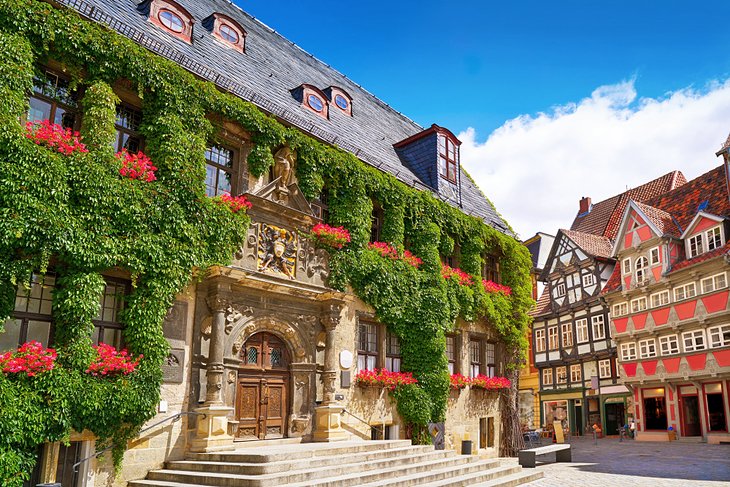
The most remarkable feature of Quedlinburg's half-timbered buildings–apart from the sheer number of them, reputed to be the most of any town in Germany–is their progression through the history of the style.
Walking through the stone-paved streets, you can trace the history of half-timbered construction, beginning with one of the oldest half-timbered houses in Germany. Later Gothic construction was marked by upper floors extending out in layers from the lower ones, and by the addition of carved decoration.
Carving became more ornate in the Renaissance era, with the addition of projecting bays, and you'll see examples of how the style changed as late as the Baroque and Rococo eras. In all, Quedlinburg has 770 protected historic buildings, and you can learn more about the architectural styles and construction at the Fachwerkmuseum im Ständerbau.
But picturesque as they are, the half-timbered buildings are not the only attraction here for tourists. UNESCO called the Church of St. Servatius "one of the masterpieces of Romanesque architecture" and describes its crypt, which contains early frescoes and carved stonework, as "one of the most significant monuments in the history of art from the 10th to the 12th century." The church is part of Quedlinburg Abbey, founded in the 10th century and led by a series of powerful abbesses who ruled the region for several hundred years.
Rothenburg-ob-der-Tauber, Bavaria
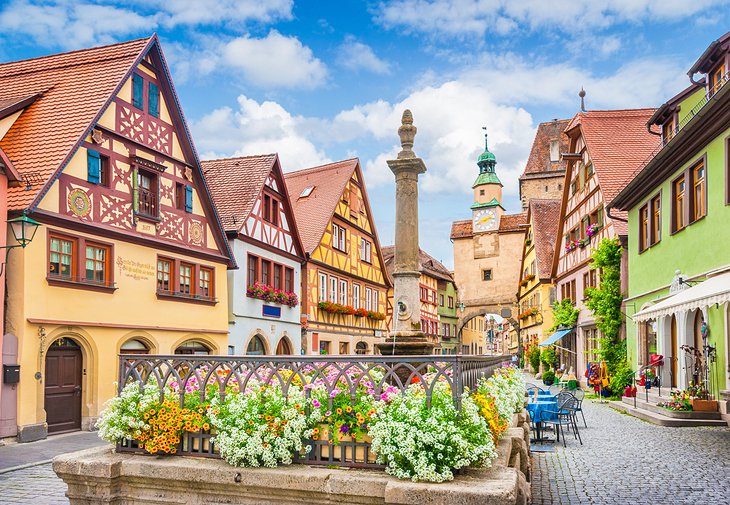
Few small towns in Germany are better known than Rothenburg-ob-der-Tauber, which along with neighboring Dinkelsbühl is the highlight of Germany's oldest tourist route, the Romantic Road or Romantische Straße.
Rothenburg's appeal is not just its half-timbered houses, which many other towns can claim in greater number, but its complete ring of town walls that bundle the Old Town into a beautifully preserved package. Walk the walls and climb a few of the towers for views of the lovely Tauber Valley and the town's steep rooftops.
Other good viewpoints are from the Castle Gardens and the tower of the Rathaus, one of the finest town halls in Bavaria. As you explore the streets, look up to appreciate the wrought-iron signs on the cafés and shops that cater to the busloads of tourists that often fill the town.
The most popular stop is Käthe Wohlfahrt's Christmas Village, just off the Marktplatz, but for a less crowded taste of the season, you can visit the Christmas Museum (Deutsches Weihnachtsmuseum), where exhibits of decorations and artifacts focus on local traditions.
- Read More: Tourist Attractions in Rothenburg
Schiltach, Baden-Württemberg
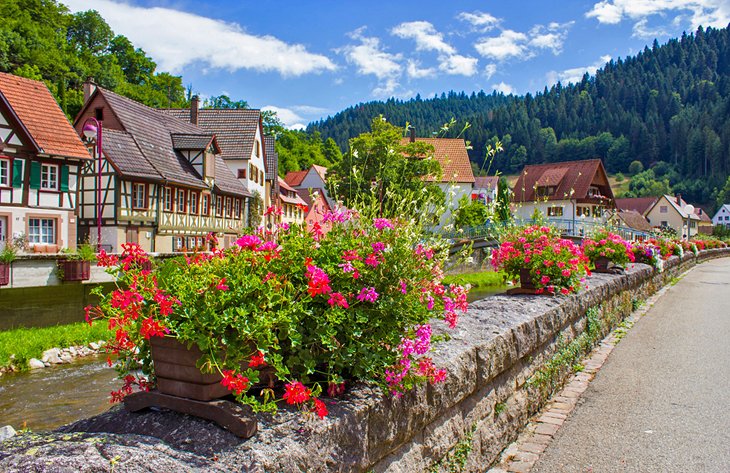
A stop along the German Half-Timbered Road, Schiltach owes its early prosperity to the Kinzig River, which was a major transport route for the Black Forest's timber trade from the 13th century. The river also provided power for the sawmills, and its banks were a good location for tanning animal hides.
The half-timbered houses that line the riverbank so picturesquely today were the homes of tanners; this neighborhood outside the town walls is the oldest in Schiltach. The other assemblage of medieval houses is along Schenkenzeller Straße, originally the main street through the old town, where merchants and craftsmen lived.
More half-timbered buildings surround the sloping triangular Marktplatz, where you'll find the four-century-old Town Hall and two of the town's free museums, Museum am Markt and the Apothecary Museum. A third, the Schüttesäge Museum, occupies a 1491 sawmill that operated until 1931, powered by an undershot waterwheel more than seven meters in diameter.
Bernkastel-Kues, Rhineland-Palatinate
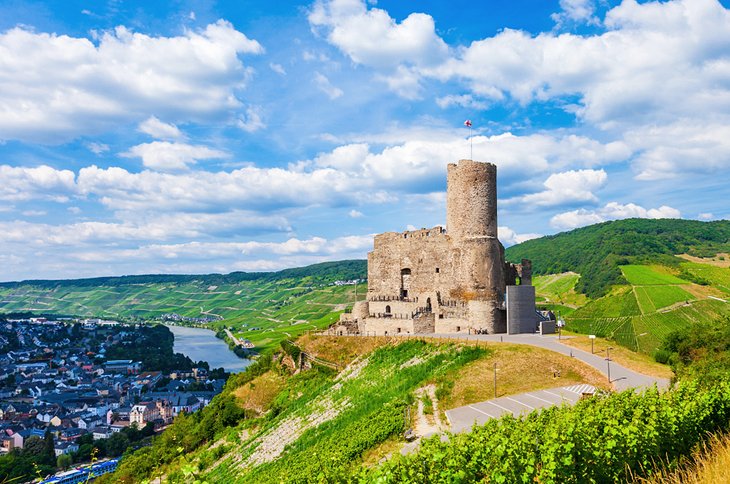
In the heart of the Mosel Valley, the twin towns of Bernkastel and Kues face each other across the river below vine-covered hillsides. Bordering Bernkastel's medieval Marktplatz are well-preserved gabled and half-timbered houses and the Renaissance Rathaus, a town hall built in 1608.
Stroll the surrounding streets to find more medieval houses, especially on Römerstrasse, and Karlsstrasse, where you'll find the curious Spitzhäuschen with its projecting upper story. Look for other examples of this method used by medieval builders to maximize a narrow building lot.
On the riverbank is the Early Gothic St. Michael's Church, unchanged from its original 14th-century construction. Among the treasures inside are the 15th-century high altar and an altar commemorating the 17th-century plague. The church's stone tower was originally built as a watch tower, later incorporated into the city walls before the church was built.
Across the Mosel in Kues are more historic buildings, including St. Nicholas's Hospital, founded in the 15th century, which contains a collection of astronomical instruments. Climb the hill above Bernkastel for views of the valley and to explore the ruins of the 9th-century Landshut Castle, recently discovered to have Roman origins.
Esslingen, Baden-Württemberg
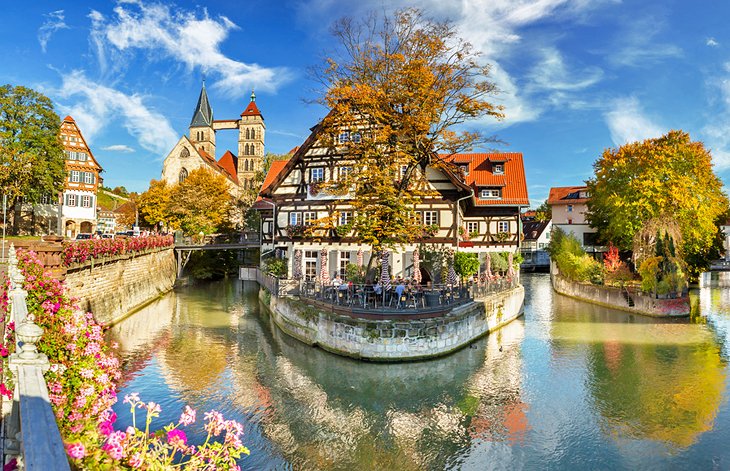
A highlight on both the German Half-Timbered Road and the Castle Road, Esslingen became a major trading center in the Middle Ages as a crossing point on the Neckar for medieval traders.
More than 200 timber-framed buildings from the 13th to 16th centuries surround the market square and line its canals. These form an authentic stage set for the annual December Mittelaltermarkt, a Christmas market that re-creates the street markets in the Middle Ages. Handcrafts and foods of the era are demonstrated and sold from colorful tents while costumed jugglers and minstrels stroll the streets.
At the center of the market is the Rathausplatz, overlooked by the Old City Hall dating from the Gothic period. The colorful Renaissance façade was added in the 1580s with its famous astronomical clock.
Explore the medieval streets and stroll along some of the three kilometers of canals to admire the half-timbered houses, then stop to see the beautiful 13th-century stained-glass windows in the choir of the Stadtkirche St. Dionys. The church, which shows the transition from Romanesque to Gothic styles, has two unmatched towers connected by an unusual bridge, built to stabilize them.
The castle walls and towers that crown the steep hillside above were built to defend the town. The High Watch Tower was built in the 14th century and offer a bird's-eye view of Esslingen; the Burg gardens are a nice place to visit for a stroll.
Wismar, Mecklenburg-Western Pomerania
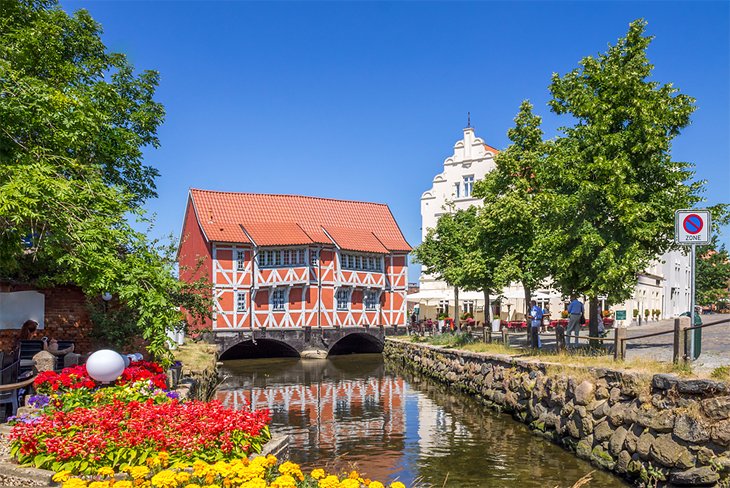
Still an important seaport on the Baltic Sea, Wismar was formerly part of the powerful Hanseatic League, whose ships and ports ruled the entire Baltic region in the Middle Ages. So much of its medieval architecture and harbor survive that Wismar was named, along with the neighboring ports of Rostock and Stralsund, a UNESCO World Heritage Site.
The distinctive stepped gables on many of the buildings are a common characteristic of Hansa architecture, but the mammoth brick churches in cities along this stretch of coast are unlike those anywhere else. Wismar has two of these; the 36-meter-tall nave of St. Nicholas, built in 1381, is one of the tallest. Stop also to see the lovely medieval Church of the Holy Ghost.
Wismar's harbor, the Alter Hafen, is so well preserved that it looks like a stage set–as indeed it has been for several films. Fishing boats line the quay and sell fresh seafood sandwiches called fischbrötchen at lunchtime, and several boats offer sailing cruises.
Annaberg-Buchholz, Saxony
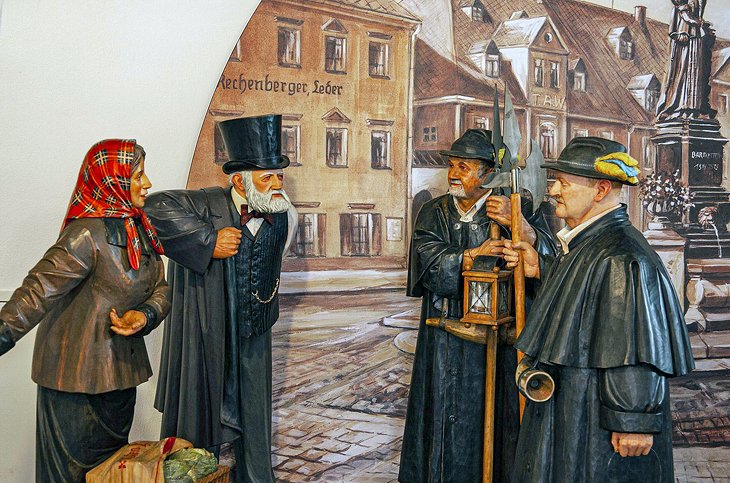
Deep in the Erzgebirge (Ore Mountains) region, Annaberg-Buchholz celebrates Christmas all year-round. In fact, as is true of other Erzgebirge towns, it's the mainstay of the economy, replacing the extensive mines whose empty tunnels still burrow through the hills.
Woodcarving had always been a local pastime, and when the mines closed, miners began selling their carvings, especially the local traditional candle arches to display in windows. These, brightly painted nutcrackers, spinning candle carousels and wood-turned angels, became popular at Christmas markets throughout Germany and beyond, but you can find them year-round in Annaberg shops.
The extensive Manufaktur der Träume (maker of dreams) museum not only displays examples of all the local Christmas carvings and wooden toys but shows how they are made. Particularly interesting are the large dioramas set to motion by water-driven cog wheels and pulleys, miniatures of the hydraulics used in the mines. More than 1,500 colorful turned wood decorations and toys fill this Christmas wonderland.
More examples of woodcarvers' art decorate local churches with magnificent carved altars, pulpits, paneling, ceilings, and lifelike statues. Look for the carved pulpit in the impressive Annankirche and the large lifelike figures of local characters in the Miners Church.
Fussen, Bavaria
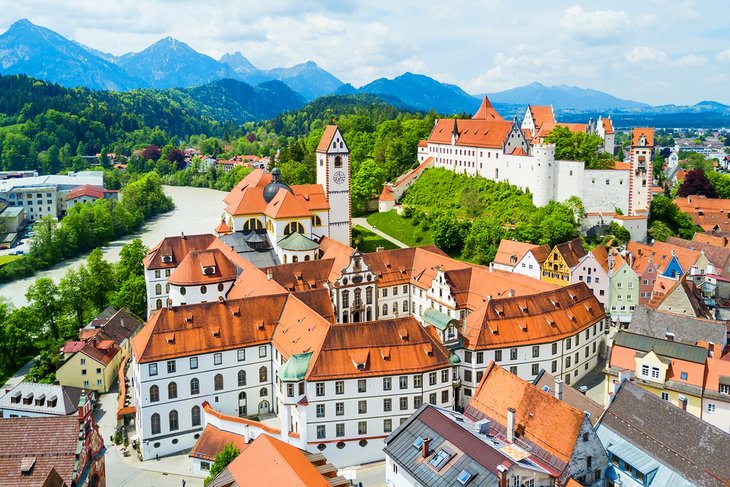
Often overlooked as simply the starting point for tours of Neuschwanstein and Hohenschwangau castles, Fussen is well worth exploring for its other tourist attractions, too. The fortress that guarded a Roman river crossing grew to become the Hohes Schloss, now mostly from the 14th century. The exterior is painted with trompe l'oeil windows and an elaborate façade, and inside is a museum with six centuries of art. Views from the battlements and tower are spectacular.
Other buildings in the attractive old town have traditional Bavarian painted facades, but the most memorable is the small Heilig-Geist-Spitalkirche, the chapel of a former hospital. The façade is an eye-catching rose color and covered with rococo paintings depicting the Trinity on the upper part, with St. Christopher and St. Florian below. Inside the altars are painted and gilded in Baroque style, and on the ceiling is a fresco representing the Sacraments.
The beautiful Baroque galleries of the Museum of Fussen were once part of the wealthy St. Mang's Benedictine Monastery, whose basilica is the most ornate of the town's churches. A bus connects the center of Fussen to both Neuschwanstein and Hohenschwangau castles.
Official site: https://en.fuessen.de
Marburg, Hess
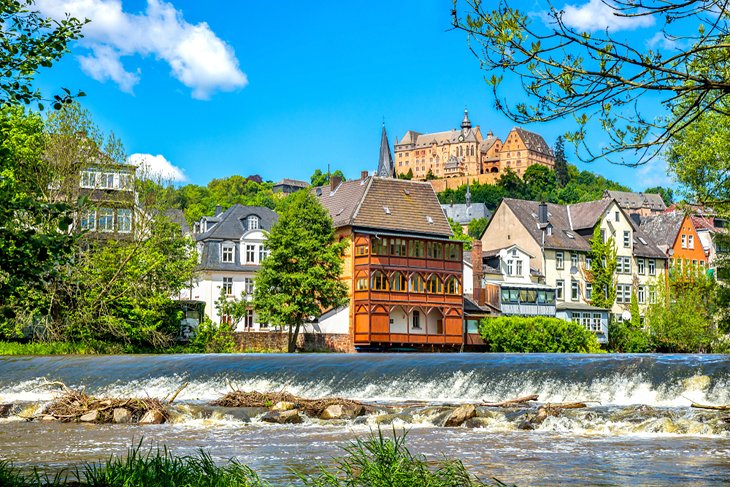
As you climb through the labyrinth of Marburg's narrow winding streets, it's easy to believe that the brothers Jacob and Wilhelm Grimm were inspired by their surroundings when they were students at the university here.
The feeling of walking through one of the Grimms' stories is intensified by landmarks on the city's Fairytale Trail. (Tip: you can ride a free glass elevator to the top and walk down.) But Marburg has more to offer tourists than a storybook setting of steep cobbled streets and half-timbered houses.
Elisabethkirche is one of Germany's oldest pure Gothic cathedrals, and its stained-glass windows telling the story of St. Elisabeth's life are spectacular. The shrine to the saint is a masterpiece of 13th-century gold work.
An imposing 13th-century castle, Landgrafenschloss, rises above the town and holds the Museum of Art and Cultural History. Origins of the hilltop fortress reach back to 1000 AD, making it one of Germany's earliest hill forts.
Gengenbach, Baden-Württemberg
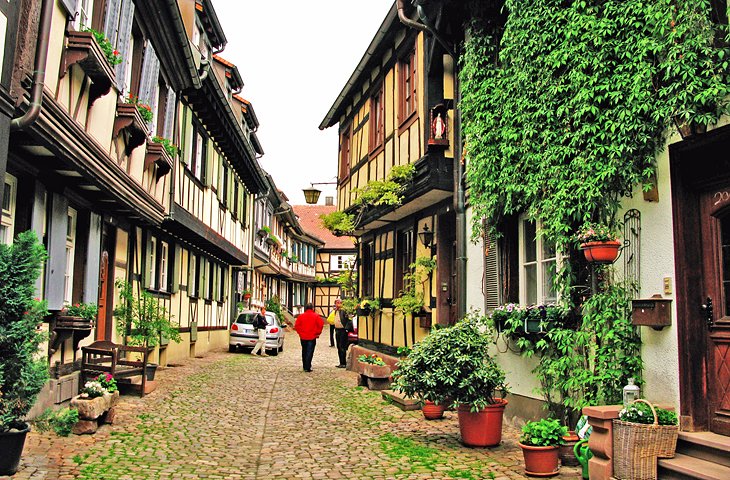
The impressive 13th-century Kinzigturm tower gate, still retaining its massive portcullis, marks the entrance to the riverside town at the western edge of the Black Forest. A street of half-timbered houses leads into the Marktplatz, dominated by the Renaissance-style Town Hall. The building is best known for its role in the Christmas market, when its windows become a giant Advent calendar.
The beautifully restored 17th-century buildings along Engelgasse (Angel Alley) and the surrounding streets offer some of the finest examples of half-timbered houses in Germany. The timbering patterns differ from house to house, and on some, the upper floors overhang the street for additional floor space. Engelgasse leads to the old town walls and the Swedenturm (Sweden Tower), part of the original defenses.
The Fastnacht Brunnen is a magnificent contemporary fountain of bronze jesters and fanciful figures representing characters in the town's carnival, known as Fasnacht. You can see more of these, as well as hand-carved masks and costumes used during the pre-Lenten celebrations in the Fools Museum Niggelturm, located in a historic tower. Although celebrated elsewhere in Germany, Fasnacht hijinks reach their highlight in this region.
Climb to the top of the 136-meter tower for views of the town and surrounding orchards.
Mittenwald, Bavaria
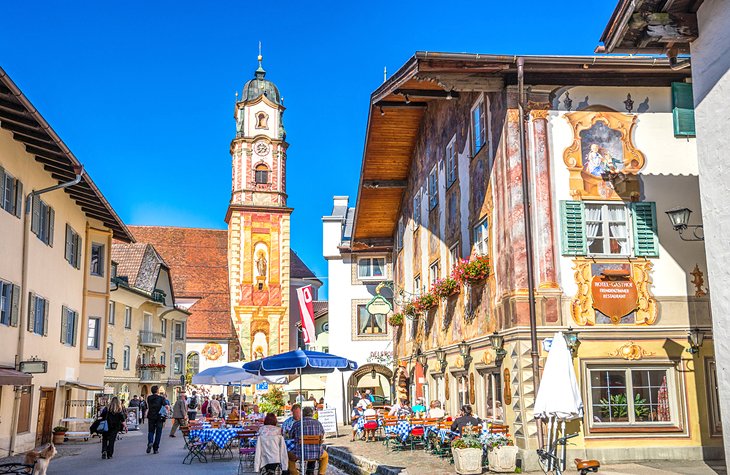
Towns in the Tyrol region of Bavaria take on an Alpine appearance that's different from their half-timbered counterparts to the north. Townhouses on Obermarkt, Mittenwald's main street, are decorated with ornately carved gables and colorful painting that can be as simple as Baroque flourishes and tromp l'oeil window frames or extend to elegant murals.
Usually with religious themes, these frescoes, known as Lüftlmalerei, often cover an entire facade. Window boxes of bright geraniums add even brighter notes, and intricate carved and painted or wrought-iron signs announce shops and eating places.
Although other towns have these decorated houses, Mittenwald is often called the most beautiful village in the Bavarian Alps. The dramatic backdrop of snow-covered peaks only adds to the picture.
Mittenwald rose to prosperity in the Middle Ages, when it was an important stop for traders crossing the Alps between the Venetian cities and Munich, and later as a center for violin making in the 17th century. The Violin Museum preserves 200 instruments made in the Mittenwald workshops.
A statue of Matthias Klotz, Mittenwald's first violin maker, stands outside the 18th-century Church of St. Peter and St. Paul, whose ceiling is decorated with frescoes of angels playing violins and other stringed instruments. The interior, exuberant with frescoes and swirling stucco work, make it one of the finest Rococo churches in Bavaria.
Görlitz, Saxony
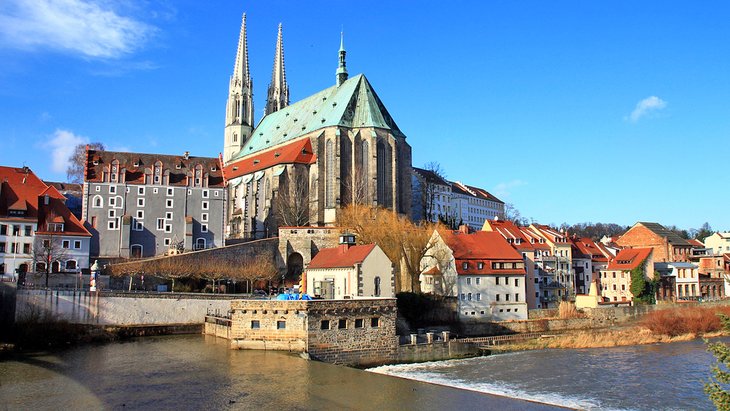
Germany's easternmost town, Görlitz sits at the Polish border. It is one of the rare towns in Saxony that escaped heavy destruction in World War II, so it is filled with more than 4,000 original historic buildings from as far back as the 13th century.
Görlitz retains its historic streets and squares so authentically that it is a favorite for on-location filming. Those who have seen Grand Budapest Hotel or The Book Thief may get the feeling they've been here before. To find these and others, get a free map of movie locations from the tourist office.
Historic and architectural attractions include the late-Gothic St. Peter's Church, a landmark with its twin steeples, and the early-Renaissance Schönhof, now housing the Silesian Museum of art and history. The Kaisertrutz Bastion is one of the four remaining of the 32 bastions that defended the town, and three fortified towers remain, the tallest of which is the 51-meter Reichenbach Tower, from the 13th century.
Look for the beautiful interiors of the Belle Epoch Bahnhof (train station) and the Gerhart-Hauptmann-Theater. From the same era, and built in the Art Nouveau style, is the newly restored Görlitz Synagogue, one of the few to escape destruction on the infamous Kristallnach.
Although Görlitz escaped destruction in World War II, it did lose an entire section of the town in the aftermath. When the borders were established following the war, the portion of the town that lies across the Lusatian Neisse River became part of Poland and was renamed Zgorzelec. The bridge connecting the two towns is a short walk from the Untermarkt.
Lindau, Bavaria
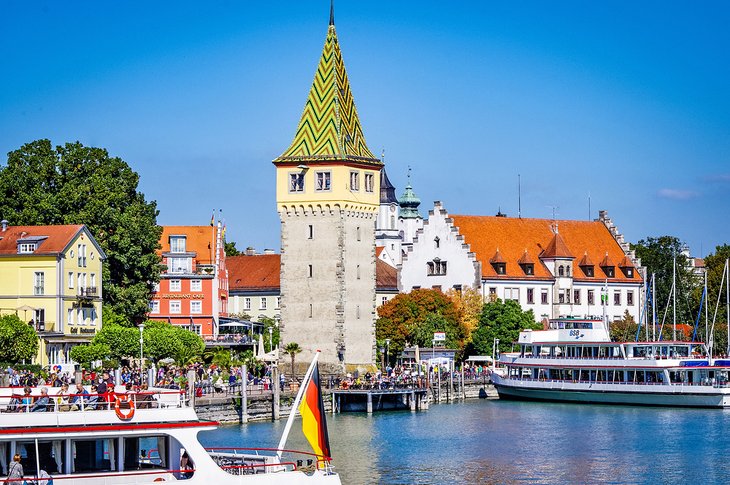
Few settings can compare to Lindau's Old Town, on an island in the Bodensee (Lake Constance). Its harbor is guarded by two landmarks: the 33-meter New Lighthouse and a six-meter lion statue, which together are Lindau's symbol. The 12th-century Mangturn Tower, formerly a lighthouse, overlooks the harbor from a park.
The Seepromenade is a wide harborside area with cafés and piers, where boats depart to Bregenz, Meersburg, and other lakeside towns, and for panoramic tours of the lake. Elegant Renaissance and Gothic houses line the streets leading into the old center, where you'll find the Gothic Altes Rathaus, with stepped gables, wooden galleries, and a painted façade.
The plain exterior of the Munster gives no hint of the interior, where the magnificent gilded and painted Baroque pulpit and altars stand out against white walls, under a frescoed ceiling. Lindau's oldest church is Peterskirche, dating from around 1000. In the 1960s, 15th-century frescoes of Biblical scenes by Hans Holbein the Elder were discovered here.
The Lindau Theatre, in addition to a full schedule of concerts and performances, hosts the delightful Lindau Puppet Opera.
More Related Articles on PlanetWare.com
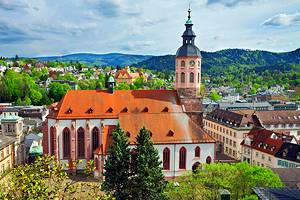
Discovering More German Towns: For a good overview of the country's best experiences, see our page on the top tourist attractions in Germany. You'll find more small towns in Southwest Germany described in our page on the tourist attractions in the Black Forest, and to see German towns at their most colorful season, see our page about the best Christmas markets in Germany.
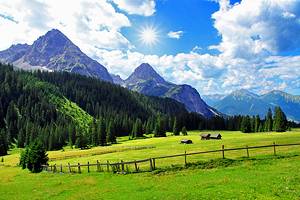
Exploring Bavaria: More of Germany's most appealing towns are in this southeast state, and you can read about them in our page on the tourist attractions in Bavaria. If you are basing yourself in Munich, also have a look at our list of the top day trips from Munich.



